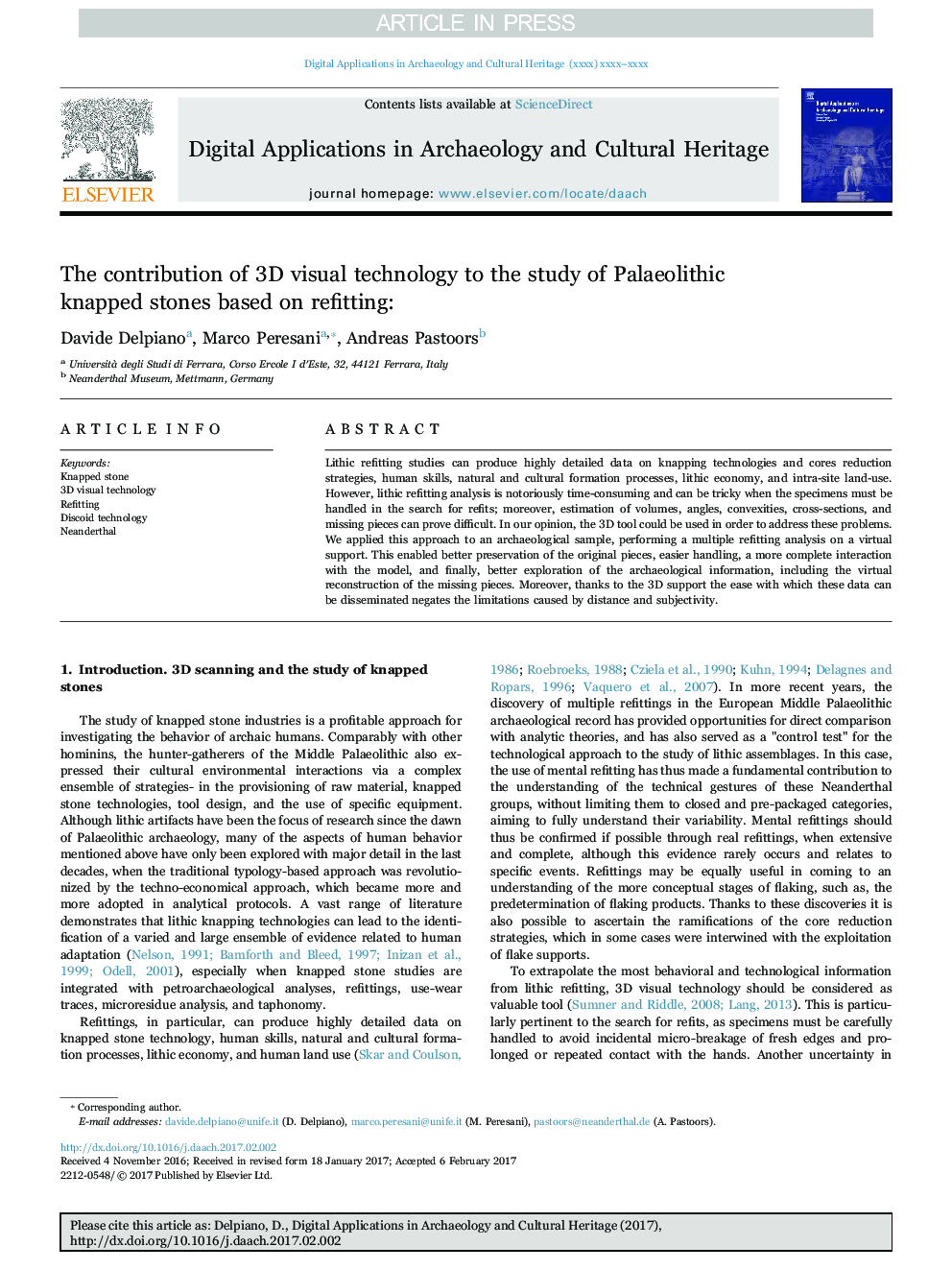| Article ID | Journal | Published Year | Pages | File Type |
|---|---|---|---|---|
| 4761578 | Digital Applications in Archaeology and Cultural Heritage | 2017 | 11 Pages |
Abstract
Lithic refitting studies can produce highly detailed data on knapping technologies and cores reduction strategies, human skills, natural and cultural formation processes, lithic economy, and intra-site land-use. However, lithic refitting analysis is notoriously time-consuming and can be tricky when the specimens must be handled in the search for refits; moreover, estimation of volumes, angles, convexities, cross-sections, and missing pieces can prove difficult. In our opinion, the 3D tool could be used in order to address these problems. We applied this approach to an archaeological sample, performing a multiple refitting analysis on a virtual support. This enabled better preservation of the original pieces, easier handling, a more complete interaction with the model, and finally, better exploration of the archaeological information, including the virtual reconstruction of the missing pieces. Moreover, thanks to the 3D support the ease with which these data can be disseminated negates the limitations caused by distance and subjectivity.
Related Topics
Physical Sciences and Engineering
Computer Science
Computer Graphics and Computer-Aided Design
Authors
Davide Delpiano, Marco Peresani, Andreas Pastoors,
